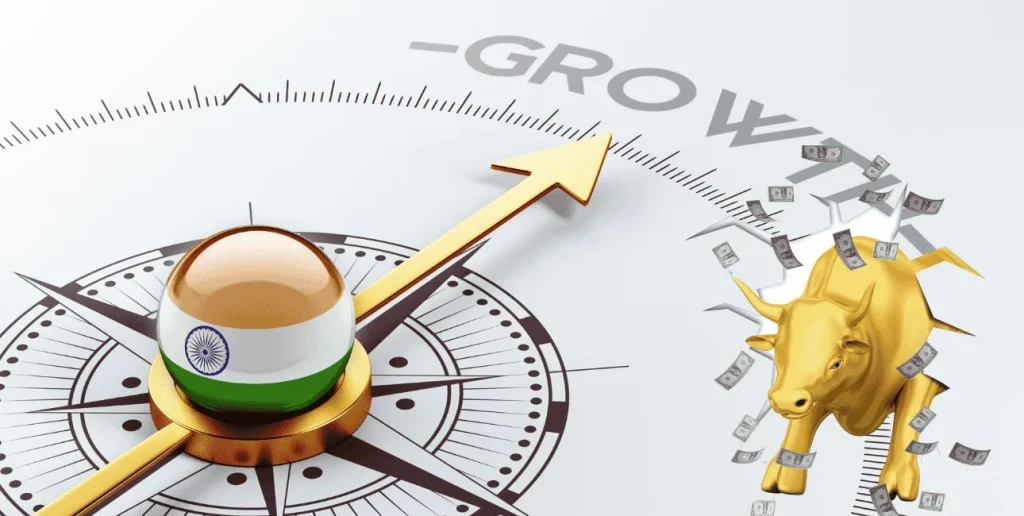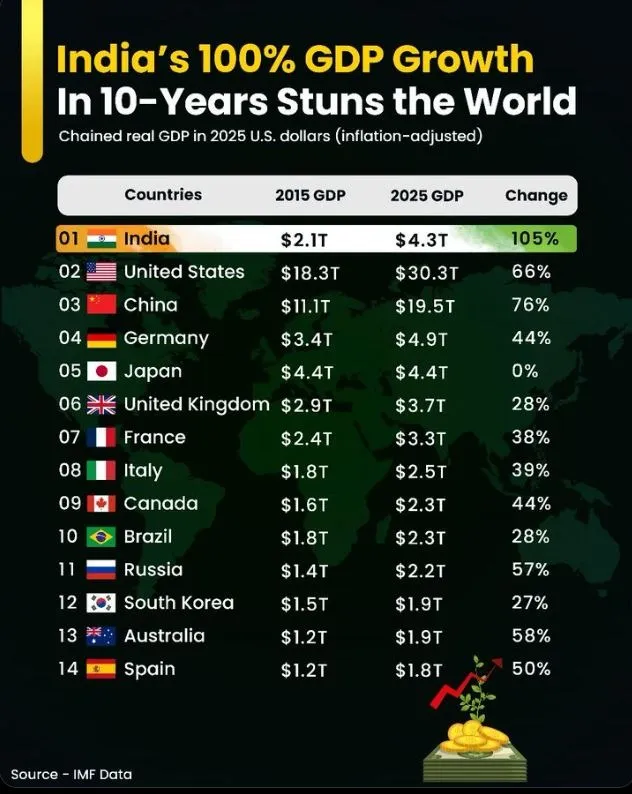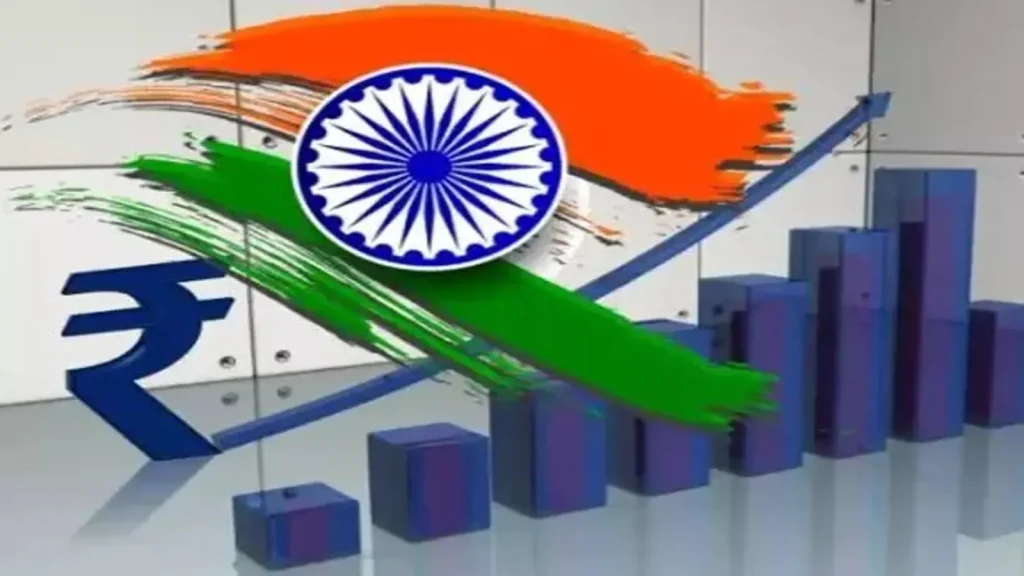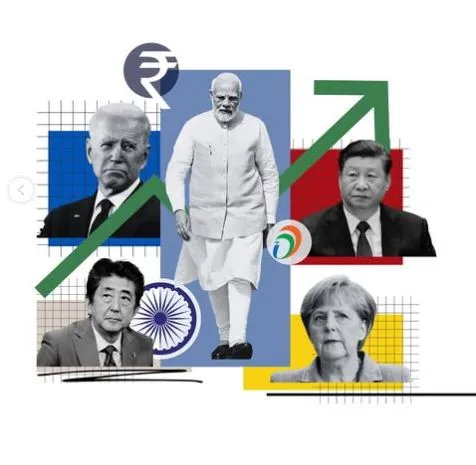India has achieved a significant economic milestone by reaching a GDP of $4 trillion, solidifying its position as the world’s fifth-largest economy. This rapid growth reflects India’s expanding influence on the global economic stage.

India’s Economic Growth and Future Projections
As per recent estimates, India’s GDP is expected to hit $4.3 trillion by 2025, just behind Japan’s $4.4 trillion and Germany’s $4.9 trillion. Given its current growth trajectory, India is likely to surpass Japan in 2025 and Germany by 2027, securing the position of the third-largest economy.
According to the International Monetary Fund (IMF), India’s economy has more than doubled over the past decade, growing by 105% from $2.1 trillion in 2015 to $4.3 trillion in 2025. This impressive growth rate outpaces major economies such as the United States, which expanded by 66%, and China, which recorded a 76% increase during the same period.
Other global economies have grown at a slower pace. The United Kingdom registered a GDP increase of 28%, while France’s economy expanded by 38%, reaching $3.3 trillion in 2025. Despite economic challenges, Russia, Australia, and Spain saw GDP growth rates of 57%, 58%, and 50%, respectively.

India’s Economic Rise Over Key European Nations
A decade ago, France’s economy was larger than India’s. In 2015, France had a GDP of $2.4 trillion, compared to India’s $2.1 trillion. By 2025, however, India’s GDP is estimated at $4.3 trillion, surpassing France by nearly 30%. Similarly, the UK, which had a GDP of $2.9 trillion in 2015, will reach $3.7 trillion in 2025—still behind India.
Over the past decade, India has moved from being the seventh-largest economy to the fifth-largest, overtaking both France and the UK.
India Set to Become the Third-Largest Economy by 2027
India’s current GDP of $4.3 trillion is just short of Japan’s $4.4 trillion, but Japan’s economy has remained stagnant over the past decade. While India has doubled its GDP in this period, Japan’s economy has remained at the same level, setting the stage for India to overtake it soon.
By 2027, India is projected to surpass Germany’s $4.9 trillion GDP, cementing its place as the world’s third-largest economy.

India vs. China and the US: A Long Road Ahead
Despite India’s strong growth, it remains far behind China and the United States. In 2015, China’s economy was over five times larger than India’s at $11.1 trillion. By 2025, China’s GDP is expected to reach $19.5 trillion, still 4.5 times larger than India’s. However, while India’s GDP has grown by 105% over the past decade, China’s growth rate stands at 77%, indicating a gradual slowdown.
Meanwhile, the US remains the world’s largest economy, standing at $30.3 trillion—approximately 1.5 times larger than China’s. Given current trends, the US is expected to maintain its lead for the foreseeable future.
India’s Accelerating Economic Growth
India took nearly 60 years to become a $1 trillion economy in 2007. However, it doubled to $2 trillion within seven years and reached $3 trillion in 2021. Despite setbacks from the COVID-19 pandemic, India added another $1 trillion in just four years.

At its current pace, India is expected to add $1 trillion to its economy every 1.5 years, potentially reaching a $10 trillion GDP by 2032. This growth is driven by strong manufacturing, rising exports, and government initiatives such as the Production Linked Incentive (PLI) scheme.
Political and Historical Context
The ruling BJP has credited India’s economic success to Prime Minister Narendra Modi’s leadership, citing structural reforms, pro-business policies, and decisive governance.
Historically, India and China were among the world’s largest economies before colonialism disrupted their growth. Now, nearly 70 years after gaining independence, both nations are once again on track to become the world’s second and third-largest economies, marking a return to their historic economic prominence.
